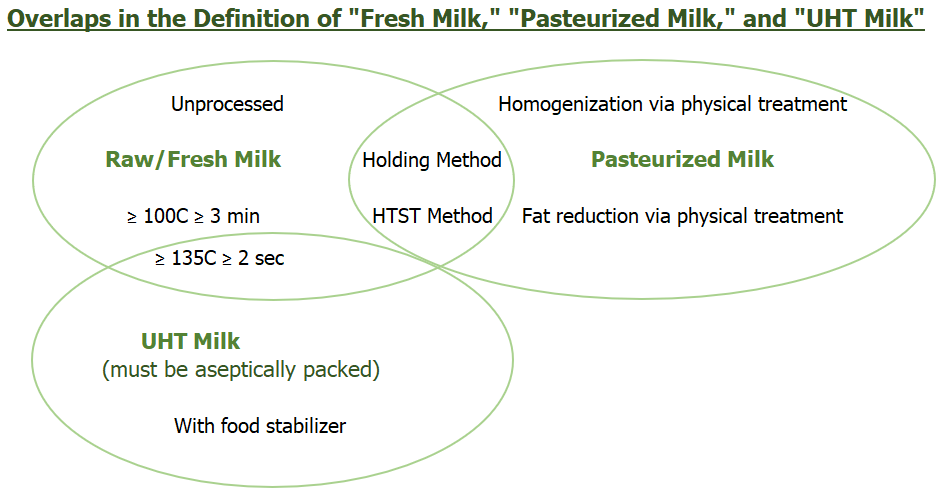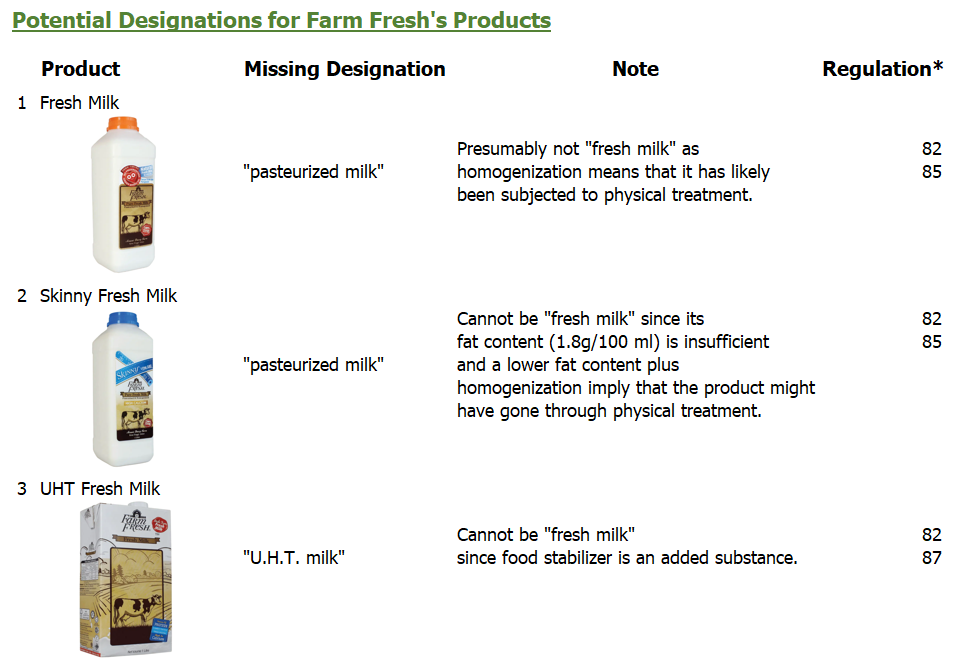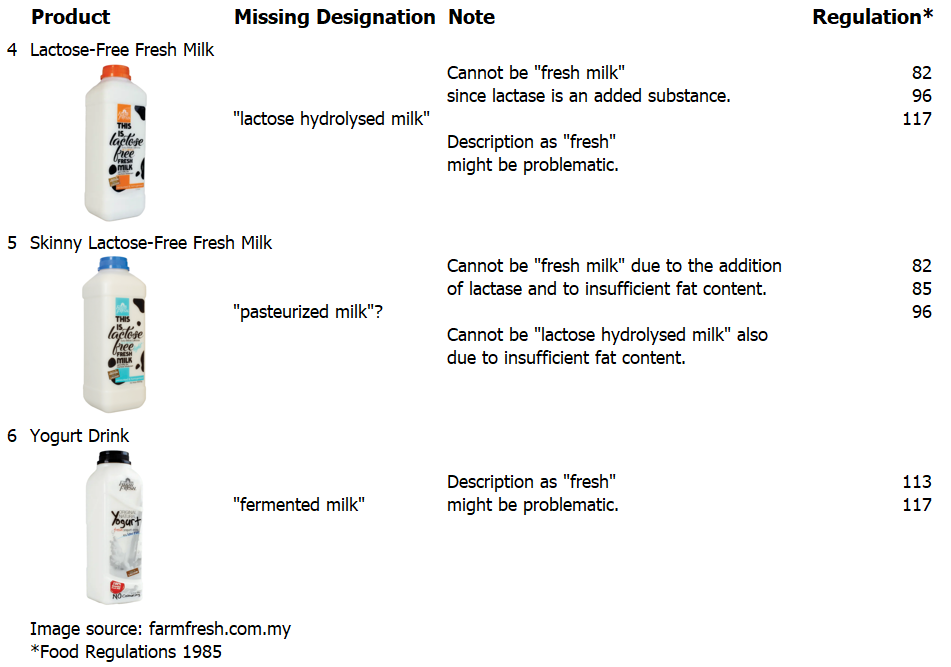Farm Fresh Berhad – Is It Really Fresh?
Neoh Jia En
Publish date: Fri, 25 Mar 2022, 12:30 PM
- Contrary to its emphasis on fresh milk, Farm Fresh might not be having any fresh milk product in its portfolio, due to physical treatment on and/or substances added to its products.
- While the description “fresh” is allowed on the label of pasteurized milk, UHT milk, sterilized milk, and flavoured milk products, it does not override those products’ designation as non-fresh milk products.
- Farm Fresh’s extensive use of the description “fresh,” and a lack of food designation on its product labels which is actually compulsory for most milk products, could cause confusions to consumers.
The listing of Farm Fresh Berhad (Farm Fresh) is undeniably one of the most anticipated initial public offerings (IPOs) in recent years. Since the company’s launch of its yogurt drink products in 2012, I have been a fan of the Farm Fresh brand for its mildly-sweet, colouring-free yogurt drinks.
Unfortunately, the listing also came with some rumours or allegations, one of which I would like to address here.
In one Facebook post on 5th March, the author, who has likely used a pseudonym, alleged that Farm Fresh has misrepresented its products as “fresh milk” which are actually (1) imported frozen milk or (2) reconstituted from imported milk powder.
Since the superior nutrition and taste of fresh milk are key points in Farm Fresh’s IPO pitch, the allegation is worth a discussion. Furthermore, false labelling of food can be a relatively serious criminal offense, as Section 16 of Food Act 1983 provides for an imprisonment of up to three years and a fine of unspecified amount on such offences.
“Milk” = “raw milk” = “fresh milk”
Under Regulation 82(1) of Food Regulations 1985, “milk”/”susu,” “raw milk”/”susu mentah,” and “fresh milk”/”susu segar” (hereafter raw/fresh milk) carry the same meaning and is defined as “the normal, clean, fresh mammary secretion of healthy cow, buffalo, goat or sheep that is properly fed and kept, excluding that obtained during the four days immediately following calving.”
Besides a requirement on bacterial content and clarification that the regulations apply to cow’s milk, Regulation 82 specifies the content and process for raw/fresh milk as follows:
Regulation 82(2): Raw/fresh milk should have at least 3.25% of milk fat and 8.5% of non-fat milk solids, and shall NOT contain any added water, permitted food additive, other added substance, or trace of antibiotic substance.
Regulation 82(4): Raw/fresh milk “may have been cooled but shall not have been subjected to irradiation, or any other physical treatment.”
Since the place of origin is not specified by the regulation, there should not be any labelling issue with raw/fresh milk that has been frozen and imported. However, milk reconstituted from milk powder clearly does not qualify as fresh milk due to the requirement for not having added water.
Yet, in making his claim that Farm Fresh imports milk powder and hence the company must be using those powder to manufacture fresh milk, the author assumed that the company only produces fresh milk products. This is a serious flaw in reasoning: Farm Fresh has many non-“fresh milk” products in its portfolio for which these milk powder is the input. These include the company’s skimmed milk, reconstituted milk, and recombined milk products that are not marketed under its “Farm Fresh” brand. Hence, the author’s allegation remains unfounded.
Are pasteurized and ultra high temperature (UHT) milk considered fresh milk?
Since all Farm Fresh’s products have gone through heat treatment, some consumers may question the differences between the company’s fresh milk products and unprocessed fresh milk.
Amateur cheese makers prefer to buy unprocessed milk since excessive heat treatment by factories might have destroyed the protein composition of milk and made it unusable for cheese-making. Just up to 6-7 years ago, the only company that sold branded unprocessed fresh milk in the local modern trade channel was RedAgri Farm Sdn Berhad (now a subsidiary of FGV Holdings Berhad) via its “Bright Cow” brand.
Hence, could pasteurized milk, or even UHT milk, be labelled as “fresh milk”?
Before the 2016 amendment to Food Regulations 1985, Regulation 82(4) actually read: “Milk may have been cooled but shall not have been subjected to heat, irradiation, or any other physical treatment.” Hence, pasteurized and UHT milk were indeed not allowed to be sold as fresh milk before the 2016 amendment that came into effect on 1st December 2017.
However, likely due to food poisoning cases, Malaysia has banned the sale of unprocessed fresh milk for direct human consumption through an amendment to Food Hygiene Regulations 2009 in 2016. Subregulation 51(1A), which came into effect on 1st December 2016, was added to mandate heat treatment on “raw milk” sold for direct consumption via one of the following four methods: (1) retained at a temperature of at least 100°C for at least three minutes; or (2) retained at a temperature of at least 135°C for at least two seconds (“method 2”); or (3) the Holding Method; or (4) High Temperature Short Time (HTST) Method.
In tandem with the amendment to Food Hygiene Regulations 2009, the word “heat” was deleted from Regulation 82(4) of Food Regulations 1985. Since the Holding and HTST Method are also heating methods prescribed for pasteurized milk in Regulation 85 of Food Regulations 1985, while method 2 is the same treatment prescribed for UHT milk in Regulation 87, some pasteurized and UHT milk products could now be marketed as “fresh milk” products.

A look at “Farm Fresh”-branded fresh milk portfolio
Unfortunately, a glance through products categorised as fresh milk by Farm Fresh revealed issues in compliance with other requirements set by Food Regulations 1985.
“Farm Fresh”-branded fresh milk products comprise (1) fresh milk, (2) skinny fresh milk, (3) UHT fresh milk, (4) lactose-free fresh milk, and (5) skinny lactose-free fresh milk.
Referring to Regulation 82(2), fresh milk is not supposed to contain any added substance. This disqualifies “Farm Fresh” lactose-free fresh milk and skinny lactose-free fresh milk from being designated as fresh milk due to the addition of lactase. Surprisingly, “Farm Fresh” UHT fresh milk contains food stabilizer, which means that it cannot be considered as fresh milk.
Moving on to “Farm Fresh” skinny fresh milk, the product’s low fat content of 1.8g/100ml would not meet the minimum milk fat requirement of 3.25% to be classified as fresh milk (this also applies to skinny lactose-free fresh milk). Furthermore, low-fat milk that is not recombined or reconstituted from milk powder has typically undergone a centrifugal separation to remove its naturally-occurring fat content – this means that the requirement in Regulation 82(4) for fresh milk to not have been subjected to physical treatment would likely not be met.
Thus far, “Farm Fresh” fresh milk remains the most hopeful to be a genuine fresh milk. However, the product is homogenized as per its label. In a typical homogenization process, milk is passed through small tubes at high pressure to break its fat particles so that they distribute evenly. This, again, implies that physical treatment might have been applied. If so, Farm Fresh may not be having any real fresh milk product, at least in its “Farm Fresh”-branded portfolio.
Which labels should consumers trust?
The lack of fresh milk product in, and the prominence of “fresh” or “fresh milk” labelling on Farm Fresh’s portfolio led to potential issues in food labelling.
Owing to the existence of fresh milk as a product designation in Food Regulations 1985, using the term “fresh milk,” without referring it as an ingredient (for example, prefixing it with the phrase “made from”), on non-fresh milk products may constitute mislabelling.
Nonetheless, the word “fresh” is explicitly permitted as a description on the packaging of pasteurized milk, UHT milk, sterilized milk, and flavoured milk as provided by Regulation 117, even though those products are not considered fresh milk. Other non-fresh milk products, however, do not enjoy such exemptions and hence even the mention of “fresh” alone may be a matter forbidden on label as implied by Regulation 18(1).
In this case, how could consumers differentiate a fresh milk product from those four non-fresh milk products?
In Japan where I currently reside, local regulations compel the disclosure of product designation/category on the top or in front of any packaged food’s ingredient list, making content identifications easy. Without this rule, consumers may not be able to differentiate products with similar characteristics, say between low-fat milk and milk beverage (some taste just like low-fat milk despite having less milk content), and between chocolate and compound chocolate (some taste like chocolate despite the substitution of cocoa butter with cheaper vegetable oil).
In Malaysia, the requirement for having food designation on labels is ambiguous, as seen in Regulation 11 of Food Regulations 1985 below.
Regulation 11(1): “Every package containing food for sale shall, unless otherwise provided in these Regulations, bear on it a label containing the following particulars, namely –
(a) the appropriate designation of the food or a description of the food containing the common name of its principal ingredients; …
(k) such other particulars as are required by these Regulations to be given in the case of any particular food.”
To help consumers in content identification, Regulation 12(2) outlines the basic visual requirement for the designation or description of food that should appear on labels.
Regulation 12(2): “…the lettering for the particulars that are required by paragraph 11(1)(a) to appear on a label shall be so prominent in height, visual emphasis, and position as to be conspicuous by comparison with any other matter appearing on the label.”
While it may be possible to provide a description of some food products in lieu of their designation, the latter approach is likely more helpful for consumers. For most milk products, their designations are explicitly required to be put on the label, as shown below, and this helps consumers in identifying whether those products are reconstituted or recombined from milk powder or not.
Regulation 85(3): “There shall be written in the label on a package containing pasteurized milk the words “pasteurized milk”.”
Regulation 87(2): “There shall be written in the label on a package containing ultra high temperature milk or U.H.T. milk the words “ultra high temperature milk” or “U.H.T. milk”, as the case may be.”
Regulation 89(7): “There shall be written in the label on a package containing flavoured milk, the words “flavoured milk” or the name of the flavour conjoined with the words “flavoured milk”. These words shall form the first line of the label and no other words shall appear in the same line.”
Regulation 92(2): “There shall be written in the label on a package containing recombined milk the words “recombined milk” and the words shall be conjoined in uniform lettering with the type of heat treatment applied.”
Regulation 93(2): “There shall be written in the label on a package containing reconstituted milk the words “reconstituted milk” and the words shall be conjoined in uniform lettering with the type of heat treatment applied.”
Regulation 96(5): “There shall be written in the label on a package containing lactose hydrolysed milk the words “lactose hydrolysed milk”, ... The words shall form the first line of the label and no other words shall appear in the same line.”
Regulation 113(4): “There shall be written in the label on a package containing fermented milk the words “fermented milk”.”
In the table below, I have tried matching several Farm Fresh’s products with their potential designation based on standards prescribed in Food Regulations 1985.


Although incompliance with regulations on food labelling is commonplace in Malaysia, especially among small-scale packaged food producers (for example, some packaged foods that are produced in Malaysia and sold in modern trade channels do not have Malay-language labels – this goes against Regulation 10 of Food Regulations 1985), Farm Fresh has grown to be a sizeable food producer indirectly backed by the government. Hopefully, the company could pay more attention to its product labelling to ensure regulatory compliance and informativeness to consumers.
*This post was written to address my own confusion about the use of term “fresh milk,” which rarely appeared during my coverage of several regional dairy producers, yet emphasised by the management of Farm Fresh during the company’s IPO pitch. I have no interest in any of the securities mentioned.
P/S: Farm Fresh has updated its product packaging, therefore allegations in this post may no longer apply.
Related Stocks
| Chart | Stock Name | Last | Change | Volume |
|---|
Market Buzz
2025-01-13
FFB2025-01-13
FFB2025-01-13
FFB2025-01-13
FFB2025-01-13
FFB2025-01-10
FFB2025-01-10
FFB2025-01-10
FFB2025-01-10
FFB2025-01-09
FFB2025-01-09
FFB2025-01-09
FFB2025-01-08
FFB2025-01-08
FFB2025-01-08
FFB2025-01-08
FFB2025-01-08
FFB2025-01-08
FFB2025-01-08
FFB2025-01-07
FFB2025-01-07
FFB2025-01-07
FFB2025-01-06
FFBMore articles on Lorem ipsum
Created by Neoh Jia En | Feb 02, 2024
Created by Neoh Jia En | May 29, 2023
Created by Neoh Jia En | Feb 10, 2023
Created by Neoh Jia En | Dec 30, 2022
Discussions
Thank you @ASOH77. I actually don't have private info about the company and its products other than what is available on its website. Had to google search for images on the back of their products since I am not in Malaysia currently. Have added hyperlinks to those one act and two regulations cited in case you are interested. By the way, please don't be too discouraged with this potential labelling issue, whether as an investor or as a consumer. I believe that the management did not know "fresh milk" carries a regulatory definition, and that they outsource both the designs and compliance checks of packaging to the same party (this is a common practice at least among small-scale packaged food producers) who messed up. As a consumer, I would still buy only their yoghurt drinks and automatically go for their chilled "fresh milk" products when other brands don't offer good discounts.
2022-03-26 13:22






















ASOH77
Good morning. Execellent article. Would to have more inform about the company & products. Can email to hipkb36@gmail.com .... maybe visit them later hahha. Thanks sir. Have a nice weekend
2022-03-26 08:55